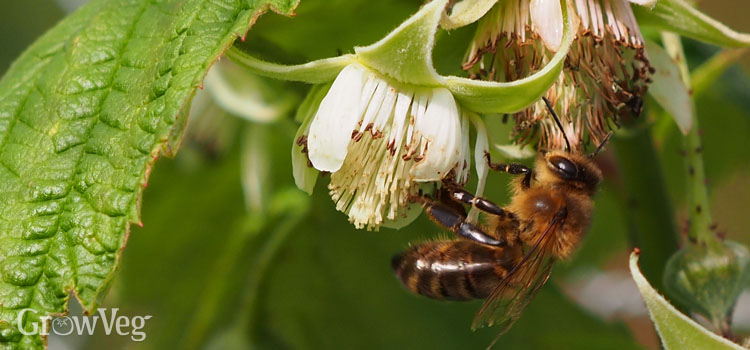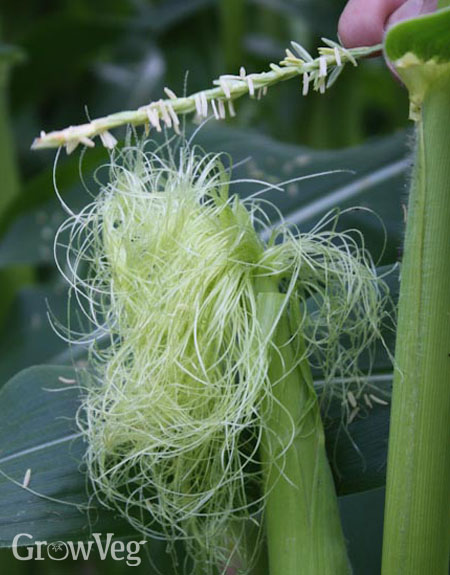22 February 2018, written by Ann Marie Hendry
Without adequate pollination, yields of fruiting vegetables and some other crops such as sweet corn would tumble. It’s for this reason that I like to make a pollination plan to get the best yields possible from my garden. Three simple techniques can be used to boost pollination in your garden: attracting pollinators, harnessing wind and, if all else fails, hand-pollination.

Plant Flowers for Bees
Most of us are familiar with the plight of bees and their importance as pollinators. To insure there are plenty of bees buzzing about your garden, you need to make your garden an enticing place for them to hang out. This means flowers – lots of them!
It’s important to plan for a wide range of flowers of different types, which will attract different kinds of bees and other pollinators. Try to extend the flowering season for as long as possible, and have something in flower before and after the flowering times of your crops. Avoid double-flowered cultivars because they can be difficult for insects to access, and contain little or no pollen.

Perennial flowerbeds or shrubberies near to your vegetable plot or fruit garden are great ways to attract pollinators, and provide valuable habitat too. Many shrubs such as buddleia, witch hazel, spiraea, honeysuckle and mahonia have flowers that insects love. Include herbaceous perennials like pulmonaria, yarrow, hardy geranium (also known as cranesbill), echinacea, sea holly and foxgloves. Chives, thyme, lavender and oregano will really help draw in pollinators, as well as providing a crop of tasty herbs. Underplant with snowdrops, crocus, squill and other bulbs.
Annual flowers such as poached egg plant and marigolds are easy to grow among your vegetables wherever you have room and will help get your pollinators right to where you need them.
Bees love cheery daisies, dandelions and clover, so why not consider your lawn a low-growing meadow instead of a labor-intensive outdoor carpet? Mowing it less regularly, one or two notches higher on your mower’s height setting, will create a much friendlier wildlife habitat. And a flower-rich lawn looks much more attractive than a bland green one!

It goes without saying that if you want to draw in pollinators, you should avoid using pesticides. They don’t just kill harmful bugs – they’re deadly to beneficial insects too.
Hand-Pollinate Vegetable Crops
In periods of wet or cold weather insects are less likely to be out and about. If poor weather lasts more than a few days, or if you’re growing under cover, you may find you need to hand-pollinate some crops.
Hand-pollination can be carried out in a couple of different ways. One way is to simply remove a flower and pull back or strip off the petals, then rub it inside another flower. Some plants have separate male and female flowers, so make sure to get the correct ones! In squash-family plants such as zucchini, the female flowers are distinguishable from the male ones by a swelling (the immature fruit) behind the flower.
Alternatively, use an artist’s paintbrush to gently gather pollen from one flower to brush inside another. This works well for early strawberries.

Corn can also be hand-pollinated, which is especially useful for those plants that are upwind of the rest. Our article The Sex Life of Sweet Corn describes in detail how to go about it.
With these methods in place, you can be assured of a better harvest – not to mention a gorgeous garden buzzing with bees. We’d love to know what techniques you use to boost pollination in your garden. Share your tips with us in the comments section below!
AeroGarden – Ways to Pollinate for Maximum Vegetable Yields
FAQ
How to speed up pollination?
How do you increase cross-pollination?
How do you ensure pollination?
How do you care for Aaron’s beard plant?
